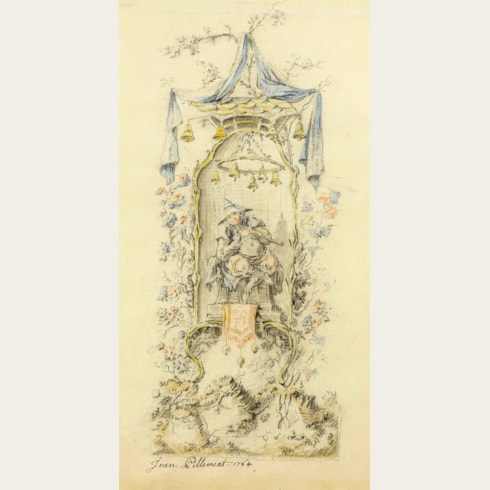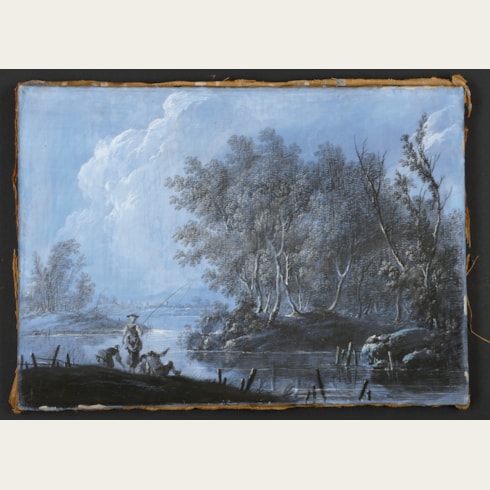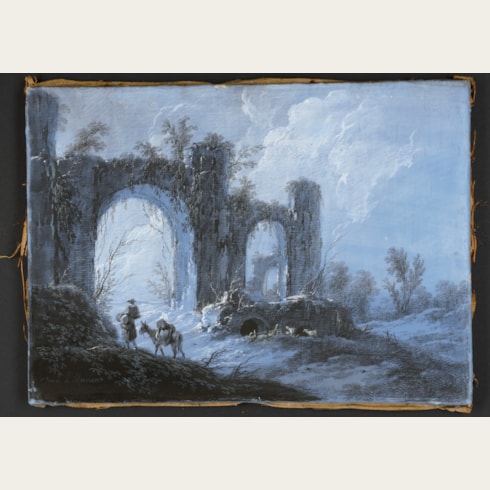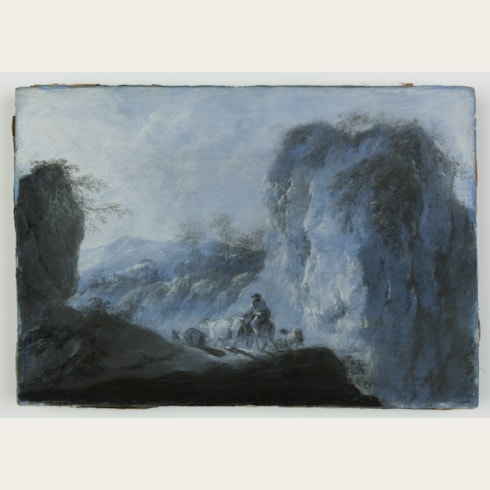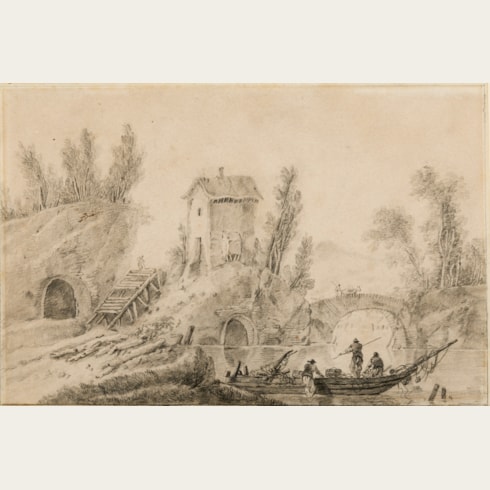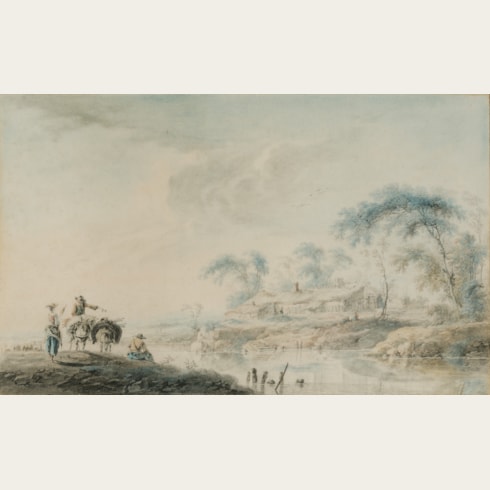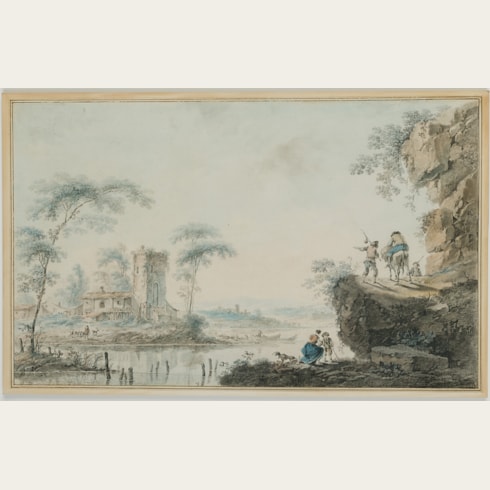Jean-Baptiste PILLEMENT
(Lyon 1728 - Lyon 1808)
Pastoral Landscape with Peasants and Sheep
236 x 338 mm. (9 1/4 x 13 1/4 in.)
In general, Pillement’s landscapes are not topographical views of a particular location, but instead tend to depict bucolic scenes of man and nature in harmony. As another writer has pointed out, ‘Nature is approached in a purely romantic and ideal vein not seen again until the time of Bidauld, Corot and others of their generation. All the ugly brutal truths of nature and peasant life in the Ancien Regime are transformed into a poetic world of harmony where a haze of contentment seems to envelop every scene.’
The present pair of landscapes belong to a small group of pastoral subjects by Pillement executed in shades of blue pastel applied directly onto prepared canvases; a somewhat unusual technique that the artist occasionally adopted. Pastel landscapes in this distinctive blue tonality are quite rare in Pillement’s oeuvre, but their origins can be traced to an important decorative project undertaken by the artist during his stay in Vienna between 1763 and 1765. Pillement received a commission from the Empress Maria Theresa for a series of eighteen large landscapes and seascapes – all drawn in blue monochrome pastel on prepared canvases - for a room (known as the Blaue Pastellzimmer, or Blue Pastel Room) in her summer residence, the Blauerhof (or Blue Palace) at Laxenburg, outside Vienna. Eleven of these remarkable, large blue pastel scenes survive today, in the collection of the Historisches Museum der Stadt Wien in Vienna.
This pastel landscape is very similar in technique, subject, mood and effect to the series of Laxenburg pastels, and must have been inspired by them.
‘An artist with a great deal of merit, gifted with a prodigious talent, this busy man worked in all genres (except history painting and portraiture) in oil, pastel, chalk, ink, pencil, and always with an ease, a facility, a remarkable rapidity. His touch is extremely firm, neat, precise. One never sees hesitation or indecision in his works, all of which are characterized by a great harmony, and by an abundance of spirit.’ Thus was Jean Pillement described some twenty years after his death, and such assessments of his abilities have lasted into the present day, with one modern scholar aptly describing the artist as ‘a versatile painter and an exquisite draughtsman’.
One of the most influential decorative and ornamental draughtsmen working in Europe in the second half of the 18th century, Pillement was an equally gifted painter, producing pastoral landscapes, marines, flowerpieces, animal subjects and chinoiseries. A precocious talent, by the age of fifteen was working as a designer at the Gobelins tapestry factory in Paris. In 1745, aged seventeen, he left France to spend three years in Madrid. This was to be the first in a long series of travels throughout Europe over the next forty years. After a period in Lisbon, where he was offered, and declined, the title of Painter to the King, Pillement spent the next few years working in London, between 1754 and 1763. His pastoral scenes, seascapes and picturesque views found an appreciative audience in England, and he became a popular and re¬spected member of artistic society in London. It was also in England in the 1750’s that some of his ornamental designs were first engraved and published, and where he established himself as a fashionable decorative painter.
Pillement continued to travel extensively during the 1760’s, receiving several prestigious commissions. Between 1763 and 1765 he was in Vienna, where he won commissions from the Empress Maria Theresa and the Prince of Liechtenstein. He was appointed court painter to King Stanislas August Poniatowski of Poland, for whom he decorated rooms in the Royal Castle and the palace of Ujazdów in Warsaw between 1765 and 1767. Back in France and appointed peintre de la reine in 1778, Pillement painted three decorative canvases for Marie Antoinette’s Petit Trianon at Versailles; the only real instance in his long career of an official French commission. For much of the 1780’s he worked in Portugal and Spain, and it was during this period that he produced some of his finest landscape drawings. Returning to France in 1789, he abandoned Paris during the Revolution and spent much of the decade of the 1790’s working in the small town of Pezénas in the province of Languedoc. The last years of Pillement’s career found the artist in his native Lyon, where he was employed at the Manufacture de Soie et des Indiennes and gave lessons in decoration and design. He died in relative obscurity at the age of eighty, his output having suffered from the decline of the French taste for the rococo in the aftermath of the Revolution.
Provenance
Didier Aaron, Inc., New York, in 1996
Private collection.
Literature







